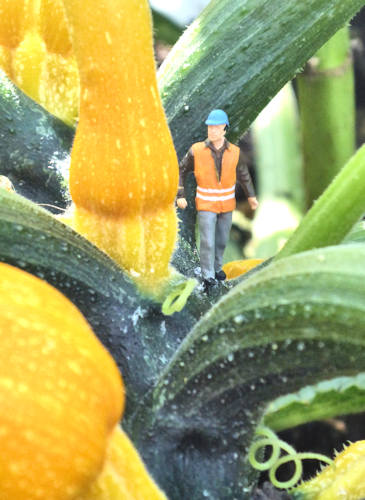Frequently Asked QuestionsQ: What is involved in a tree survey?
It is a ground level, visual survey to collect details of species, size, age and condition. We will need access to the trees to measure girth but the survey is non-invasive. Click here for more details. Q: How many/which trees will I need to survey?
All trees in the proximity of the proposed development including nearby neighbouring trees. Roots can spread for more than twice the height of the tree and they don't stop at boundaries so there may be trees in neighbouring gardens that would be also be affected. 
Q: What is BS5837?
BS5837:2012 Trees in relation to design, demolition and construction - Recommendations' is the British Standard specification for tree surveys, Further information on Arboricultural Implications Assessments (AIA) and Arboricultural Method Statements (AMS). |
|
Q: What is an Arboricultural Method Statement (AMS)?
An AMS sets out the measures that will be implemented to protect the retained trees during construction. This may include specialist foundation construction to prevent root damage. (see AIA; TPP; AMS pages) Q: What is an Arboricultural Implications Assessment (AIA)?
An AIA details which trees are likely to be affected by a proposed development. The plans will show which trees are to be retained and any that are to be removed. Click here for more information. Q: What is a Tree Protection Plan (TPP)?
A TPP is a drawing showing the position of ground protection and protective barriers around retained trees. There is usually a supporting method statement (AMS). Click here for more information. |
|
Q: How close to a tree can I build?
There are many factors to consider when building close to trees including species, vigour and size of the tree and ground conditions such as existing foundations, hard surfacing and soil type. Digging foundations close to a tree may damage its roots endangering its health and stability. Typically, 90% of a trees roots are in the top 60 centimetres of soil so digging a trench for services or foundations can have catastrophic consequences. Building close to a tree may have future consequences for your property as roots and branches grow and spread. A tree survey will specify the radius of the root protection area (RPA) which is the minimum area of undisturbed soil required to give a tree a reasonable chance of survival. |
|
Q: How do I find out whether a tree is protected?
Trees are protected if they are in a conservation area or if they have a tree preservation order (TPO). Most local planning authority (LPA) websites will have maps of their conservation areas and some also have interactive maps to check for TPO's. If the information is not available online then you will need to contact the LPA. You can find your local council by clicking here. Q: Can you provide a risk inspection report for the trees on our school or village green?
We can provide a tree condition report which is a non-invasive, ground level visual inspection to identify potential problems and recommend appropriate actions but we don't carry out risk assessments on trees. Predicting the safety or failure of trees in public places is a very specialised area. It may involve techniques such as tomography, thermal imaging or core sampling which can be expensive and is usually only appropriate for individual trees of high amenity value. You will find appropriately qualified consultants on the Arboricultural Association website. |
|
Q: Can you provide a tree condition report for my mortgage company?
Sometimes mortgage companies will ask for a tree report before they will approve funds for a property. We can provide a report stating the condition of trees at a property and the potential for them to cause subsidence. This is an above ground inspection of a tree's condition and may include recommendations for tree work. More information on mortgage reports. Q: Do you do Structural Surveys?
We do not carry out structural surveys or below ground investigations. For this you will require a structural surveyor with specialist understanding of soil types and foundations. Q: Do you do topographical, environmental or bat surveys?
No, we specialise in trees. |
Q: I have cracks in my property. Are the trees causing the problem?
Possibly. Some soil types will change in volume depending on their moisture content. If your house is built on shrink/swell clay you may have some seasonal movement between drier summers and wetter winters. In recent years the East Midlands has experienced extended dry periods and the presence of trees may aggravate the situation. If you have cracks you should contact your insurer and they will engage a structural surveyor to establish the cause of the movement. Typically this will involve laboratory analysis of soil and root samples and monitoring of levels or cracks over a period. More information on subsidence reports.
Possibly. Some soil types will change in volume depending on their moisture content. If your house is built on shrink/swell clay you may have some seasonal movement between drier summers and wetter winters. In recent years the East Midlands has experienced extended dry periods and the presence of trees may aggravate the situation. If you have cracks you should contact your insurer and they will engage a structural surveyor to establish the cause of the movement. Typically this will involve laboratory analysis of soil and root samples and monitoring of levels or cracks over a period. More information on subsidence reports.




